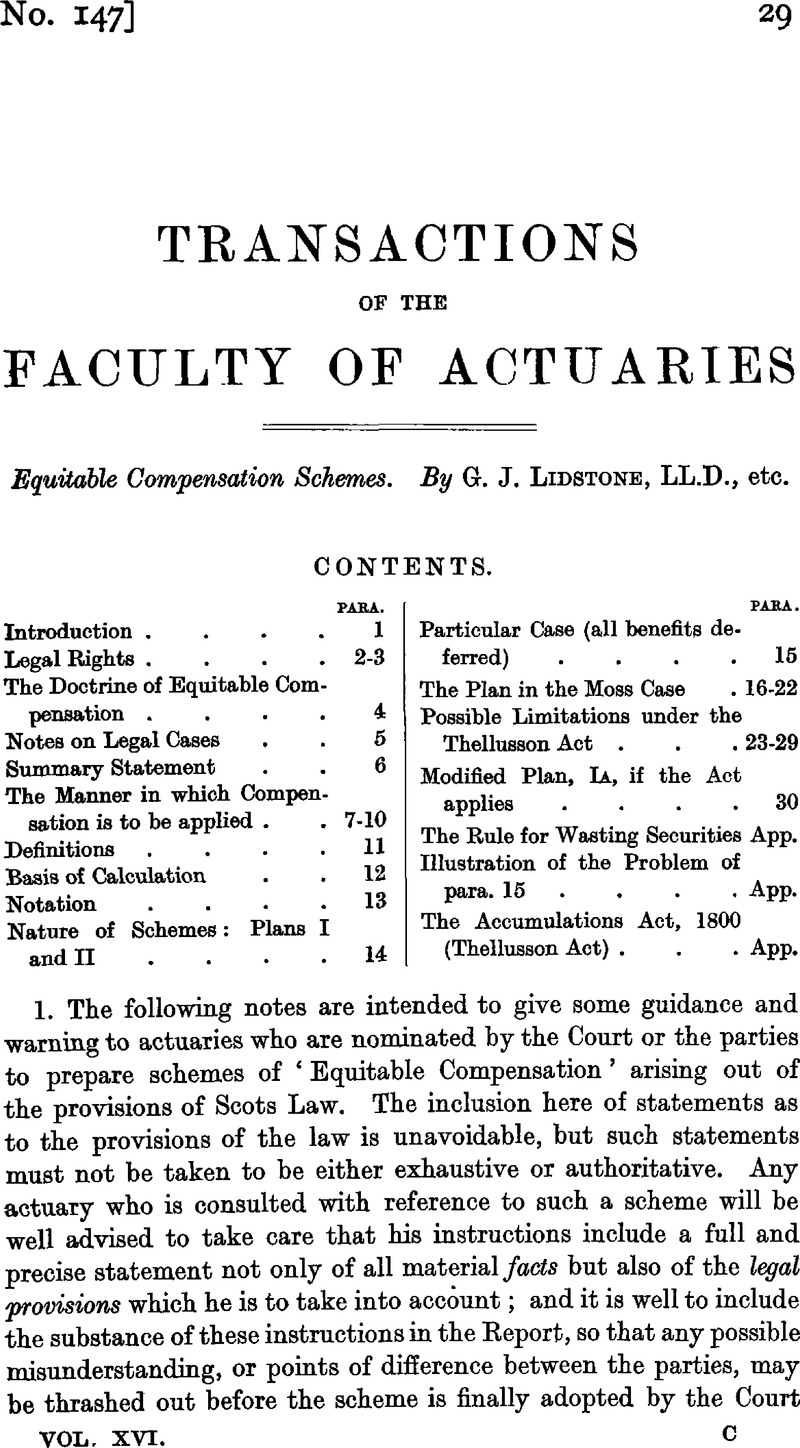No CrossRef data available.
Published online by Cambridge University Press: 07 November 2014

page 30 note * Legal rights are sometimes extinguished by Ante-nuptial Marriage Contract containing appropriate clauses of discharge.
page 31 note * At least up to the point at which it will provide full compensation to the displaced beneficiaries : the destination of any surplus depends on the terms of the settlement (see paras. 4, 5 and 6, and footnotes).
page 35 note * See the Macfarlane case. The point does not seem to be definitely settled, but it will not in general affect the Actuarial Reporter.
page 35 note † This seems to follow from the fact that Equitable Compensation is introduced to give effect to the presumed intentions of the testator, and if these intentions are precisely expressed there is no room for presumption.
page 39 note * Cf. the last para. of Lord Johnston's judgment in Rose's Trs. v. Rose, already referred to, at p. 849.
page 44 note * As will be seen later (para. 24) a full copy of the Report and other papers in the case has been placed in the Library of the Faculty for reference. Paras. 7–9 ante are taken from the Report with slight alterations.
page 45 note * Cf. Lord Johnston's remarks cited in para. 11 footnote.
page 50 note * In the Moss case, for which the plan was devised, the difficulty did not arise because, owing to prolonged litigation, the Scheme did not take effect until eight years after the Settlor's death; and by that time (a) there were considerable arrears of income for distribution and (b) the total annual Income had already exceeded 50% of the C.P. (see the Table in the Reporter's Supplemental Memorandum, Special Case, p. 50).
page 50 note † The historical origin of the Act is well known; for an interesting short account see Encycl. Brit., 11th ed., Vol. I, p. 125, article ‘Accumulations’.
page 52 note * Contrary to the submission of the appellants. This point was not decided (see para. 29).
page 53 note * Assuming that accumulation, within the meaning of the Act, was actually involved. This point was not decided. See para. 29.
page 55 note * See Note I of the Appendix.
page 57 note * The rate would probably now be less.
page 58 note * Where Capital and Income belong to the same person the position is different, and it may be suitable for some purposes to form an ordinary repayment schedule based on the single homogeneous rate [9½% in our example]. See G. King, quoted by J. A. Archer, J.I.A. lvi, p. 237.